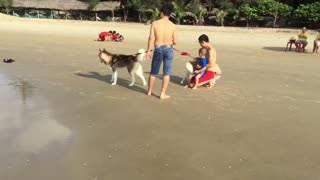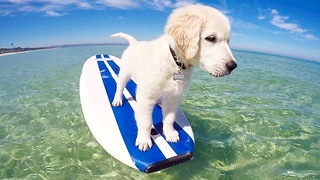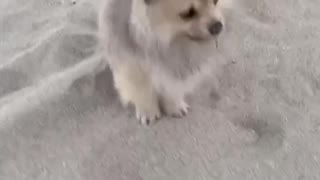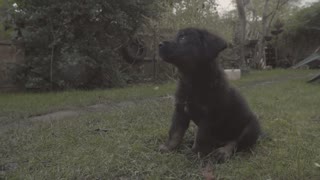A very small puppy grooming for the first time at 3 months of age [ Paddle ]
what is great about small puppies?
Small dogs come with a lot of benefits. As previously mentioned, they generally need less space to be comfortable and happy, making them a good choice if you live in an apartment or tiny home. However, just because they're smaller doesn't mean they don't need their room to exercise their little legs. They often have pent up energy and a nice dog park or walking trail is perfect to help them get their exercise if you don't have a backyard to let them play in. Small dogs also tend to eat less and their basic care costs less than for a large breed. They shed less (in total amount of fur that is) and tend to make fewer (or at least smaller) messes than large dogs, and are also easier to control on a leash or by carrying. Just think—would you rather restrain a 20-pound pup or an 80-pound giant trying to run after a squirrel? And according to PetMD, small dogs also generally tend to be hardier and live longer than their larger counterparts.
Challenges of Keeping a Small Dog?
Despite the benefits, small dogs do come with a number of challenges. Although they tend to be hardy when it comes to their health, their small bodies are more delicate and prone to injury, especially if they're dropped, played with too roughly, or if they fall or jump from furniture that's too high. For this reason, toy dogs especially are generally not a good match for households with very young children, and older children should be supervised and taught how to handle small dogs properly.
Many small breeds are also prone to various health conditions such as patellar luxation, which is when the kneecap is located in the wrong position when the knee is bent, as well as to a collapsing trachea. It is always important to check in with your veterinarian if you pet has these conditions (or others), as they may recommend special handling instructions. For example, if you pet has a collapsing trachea, they may need a harness that fits across the chest instead of a standard leash and collar.
While small dogs are often thought to be sedentary lap dogs that love to cuddle, the truth is that some small breeds need more exercise than others, and all dogs need some exercise. If you don't like to go for walks and you don't have a large yard where a dog can run and play, you should look for a breed that gets all the exercise they need with indoor play. Small breeds are often a bundle of energy. While they may not play and exercise as long as some other dogs that you can take running, shorter, more frequent play times will help give them the exercise they need.
It's also worth noting that, according to a 2009 study published in Applied Animal Behaviour Science, the top three most aggressive dog breeds were small breeds: the Dachshund, Chihuahua, and Jack Russell terrier. According to Dogtime, it's generally thought that aggression isn't inherent to these breeds, but is a fear response based largely on their tiny size, exacerbated by poor socialization and overindulgence from pet parents who don't take the aggression seriously and instead treat it as cute. The lesson here is that proper socialization and obedience training is as necessary to raising a small dog to be friendly and well-mannered as it is to large dogs. It's also important to let small dogs act like dogs, and not allow their size and appearance lure you into them like human infants, which can lead to behavioral problems, says PetPlace.
-
 0:15
0:15
SilentShadeGoldens
4 years ago $8.30 earnedAdorable little puppy learns how to doggy paddle
5.73K1 -
 8:12
8:12
Rosey9999
1 year agoSmall puppy first grooming
14 -
 5:37
5:37
bangsaprabu
2 years agoHow to Bathe a 1 Month old Puppy
6 -
 6:20
6:20
Rotumanboy
3 years agoPomeranian Puppy Grooming Teddy Bear Style
112 -
 1:50
1:50
datt21148
5 years agopuppy First Time on the Beach
9 -
 0:56
0:56
AngusTheGolden
7 years ago $0.06 earnedPuppy's first time at the Beach
125 -
 1:00
1:00
Angusthegolden
7 years ago $6.68 earnedPuppy's first stand-up paddle board session
55.6K1 -
 0:12
0:12
jamthepom
2 years agoPomeranian Puppy First Time At The Beach
43 -
 0:14
0:14
AnimallLand
3 years ago $0.01 earnedAdorable puppy has his first swimming lesson
1051 -
 1:36
1:36
aityounes
3 years ago8 week old Puppy Training
41